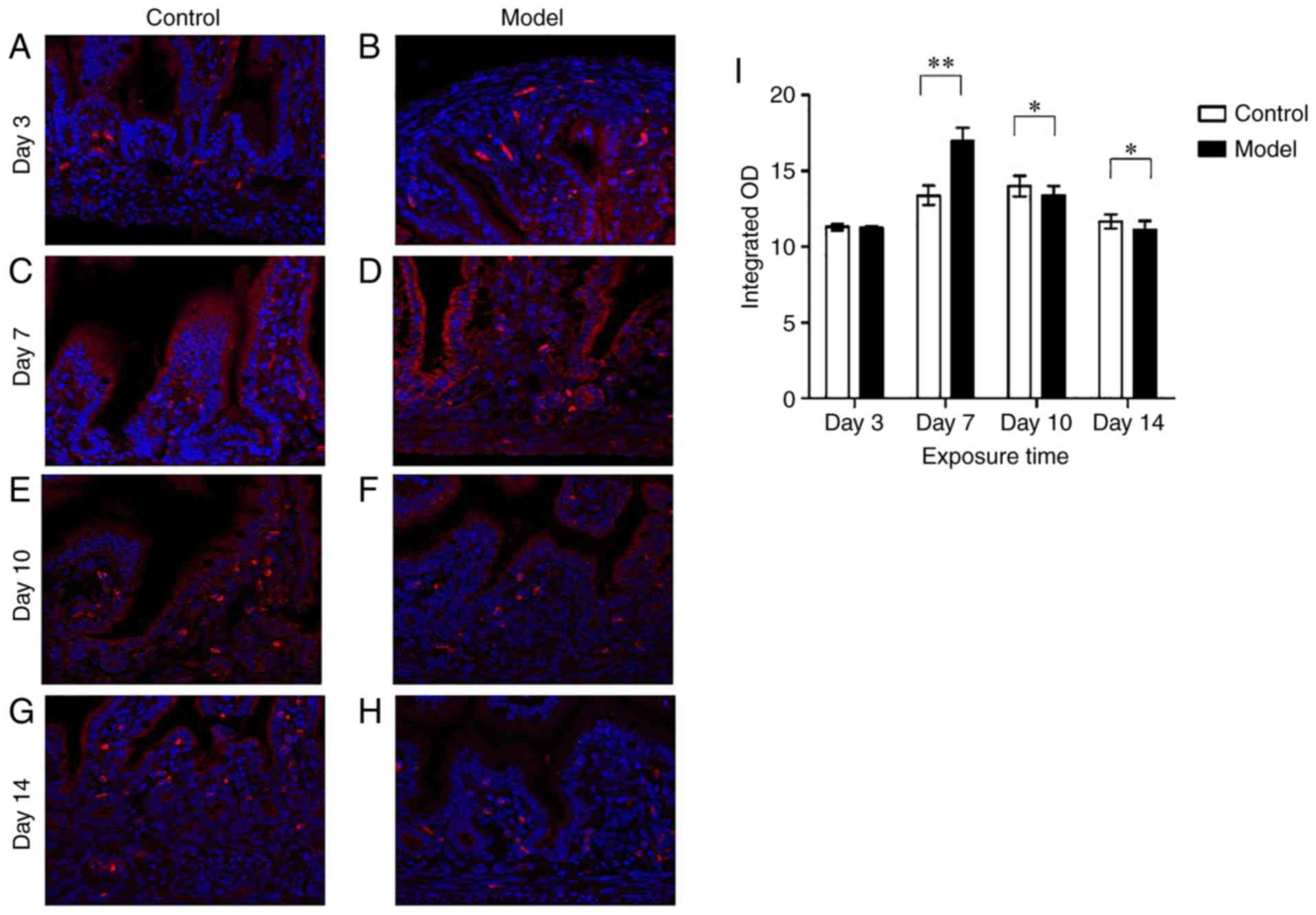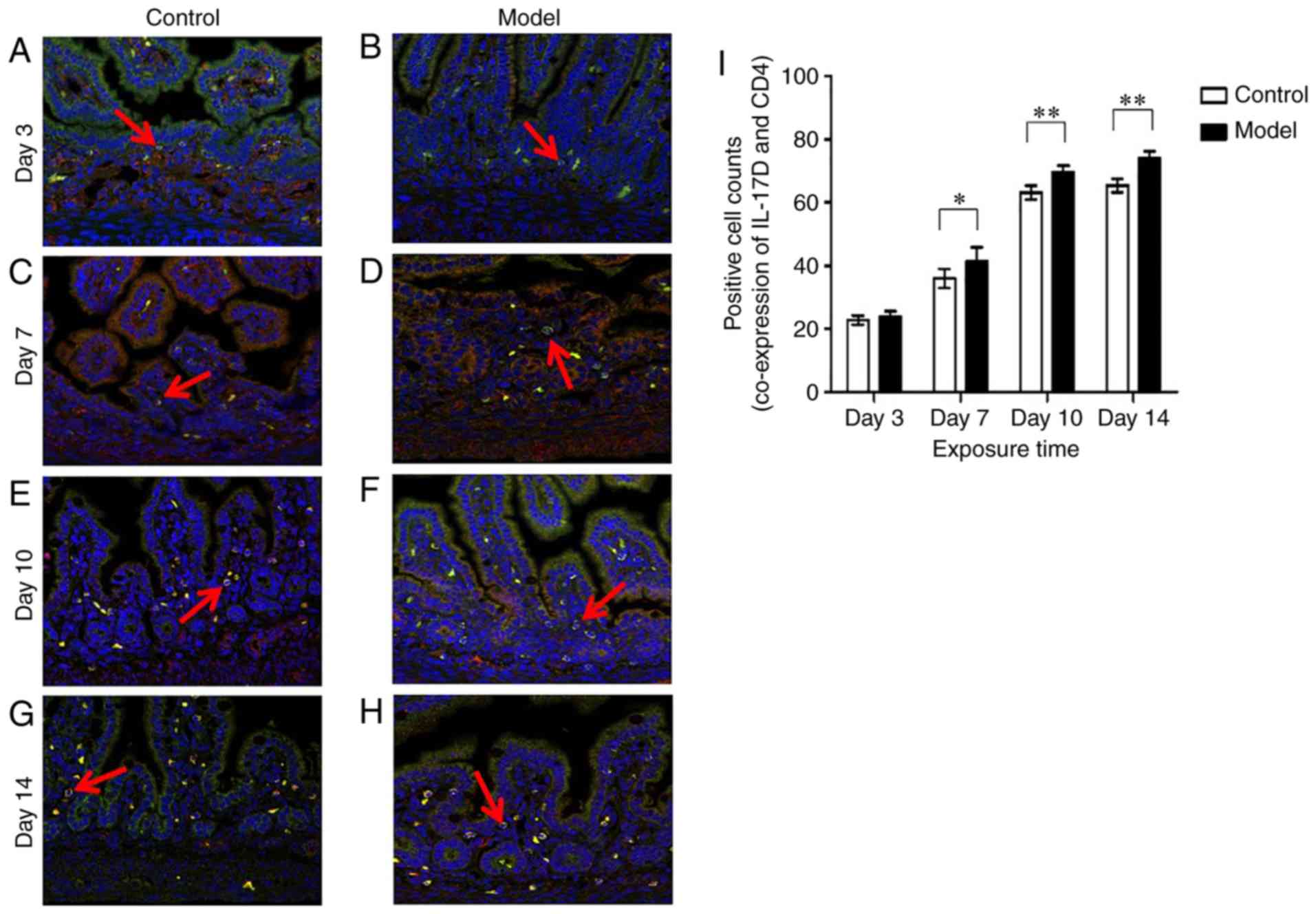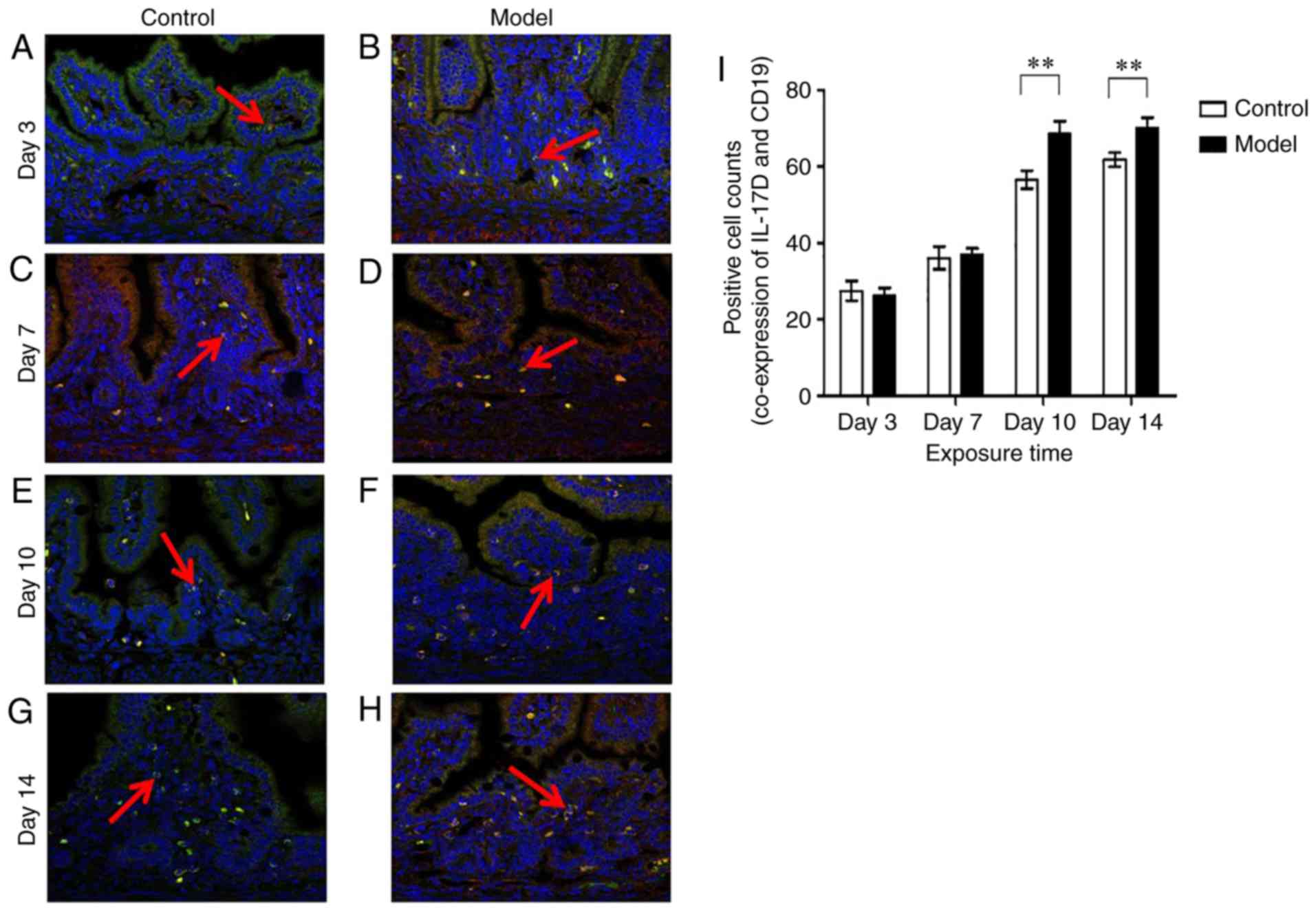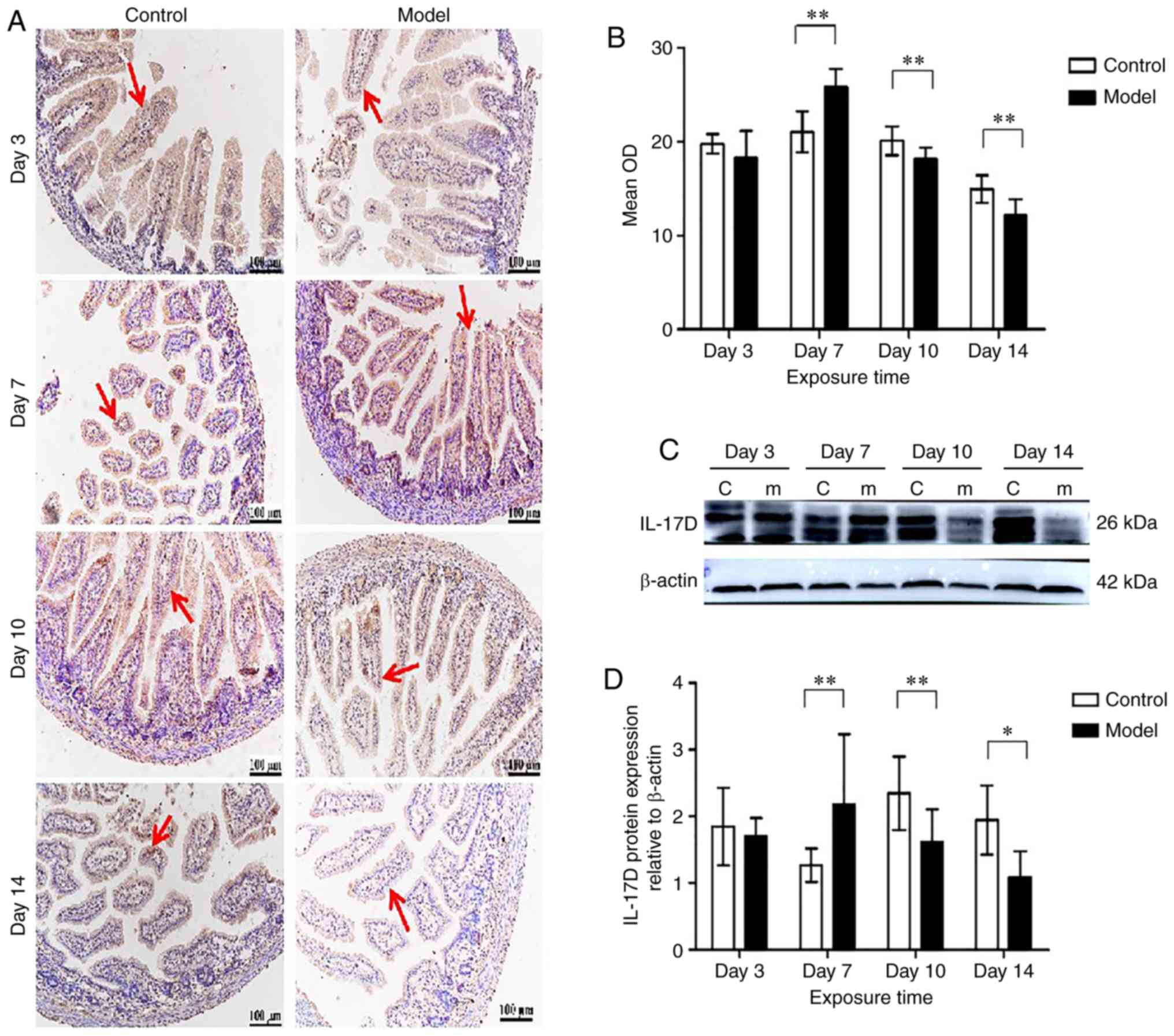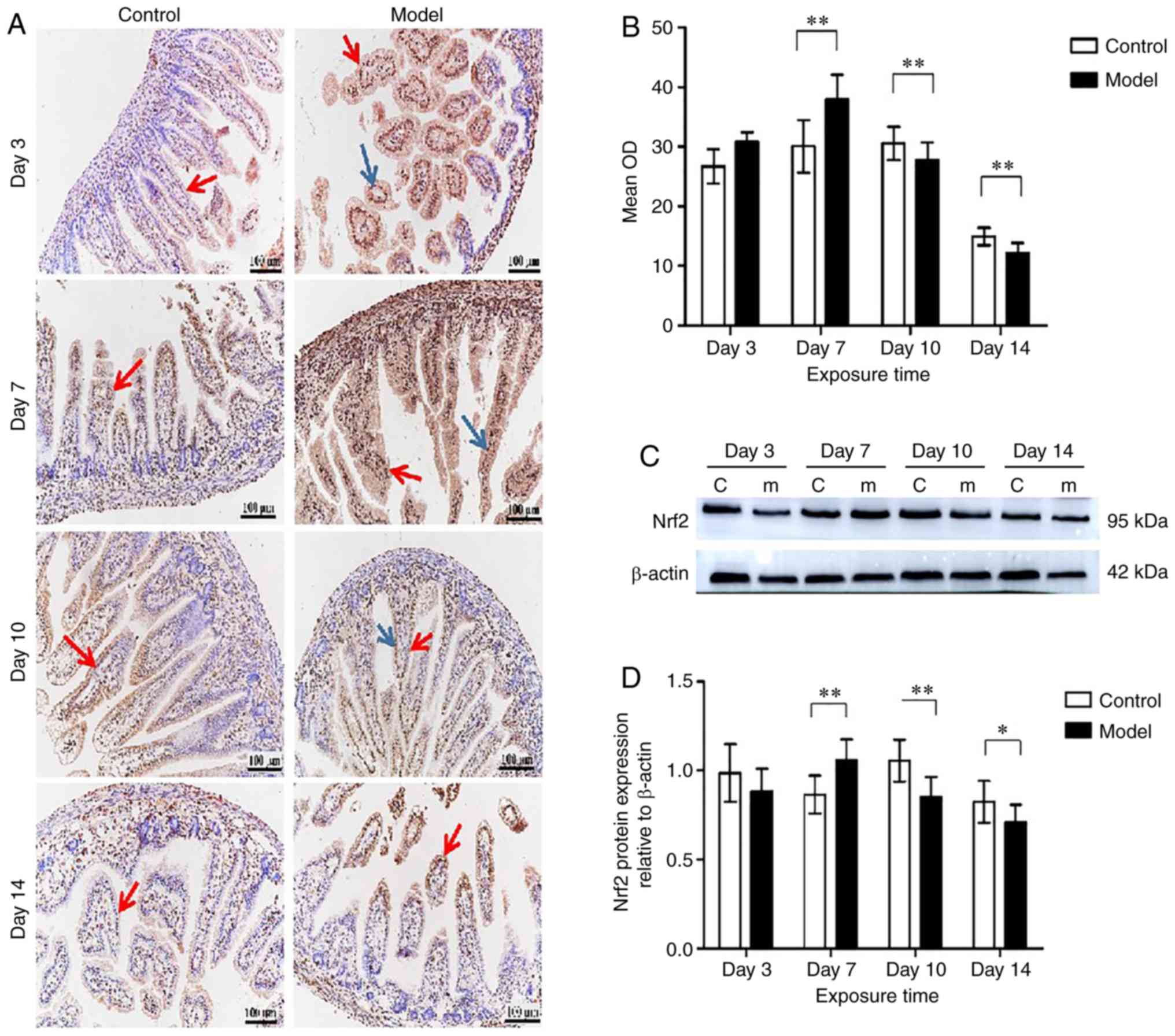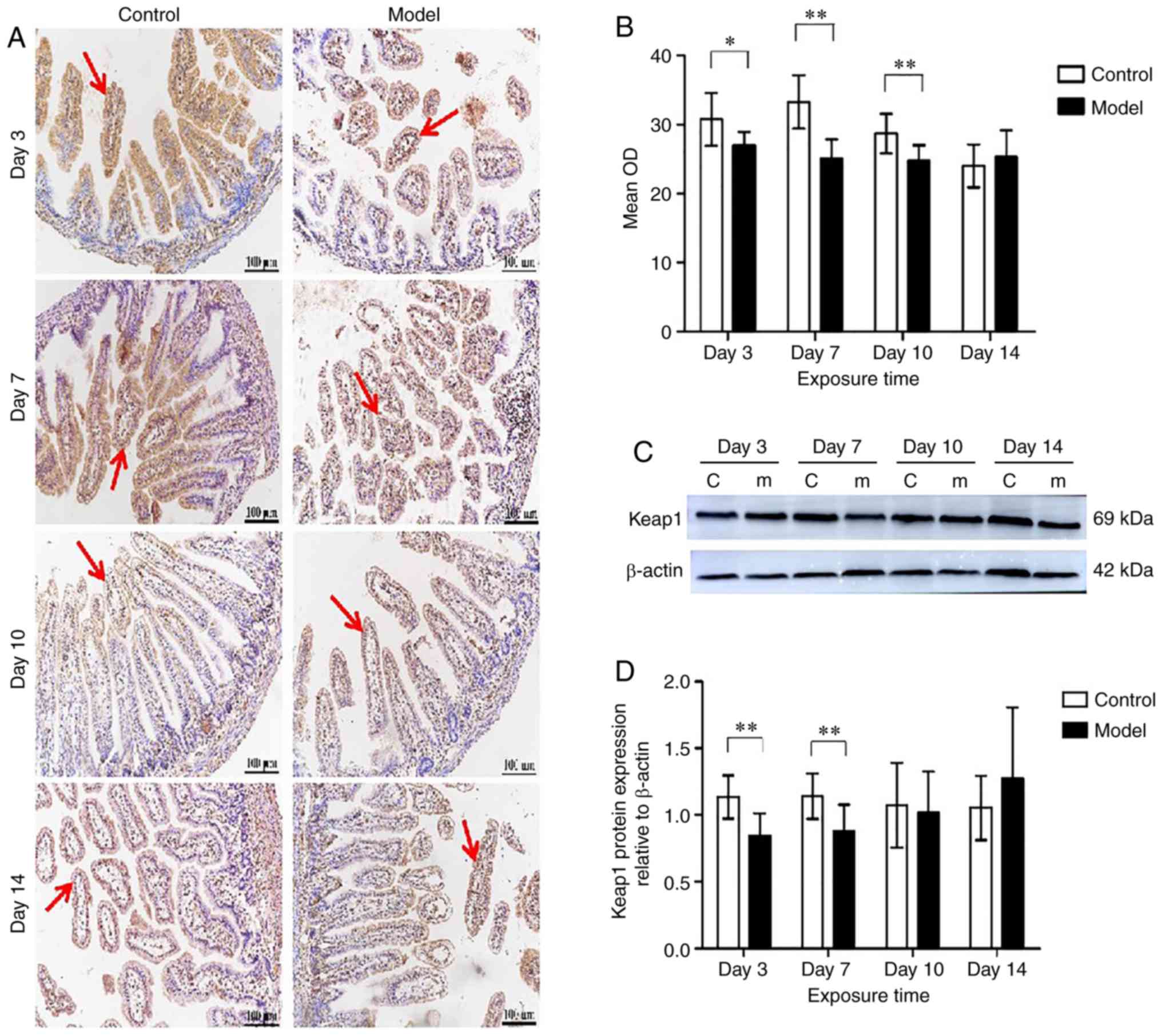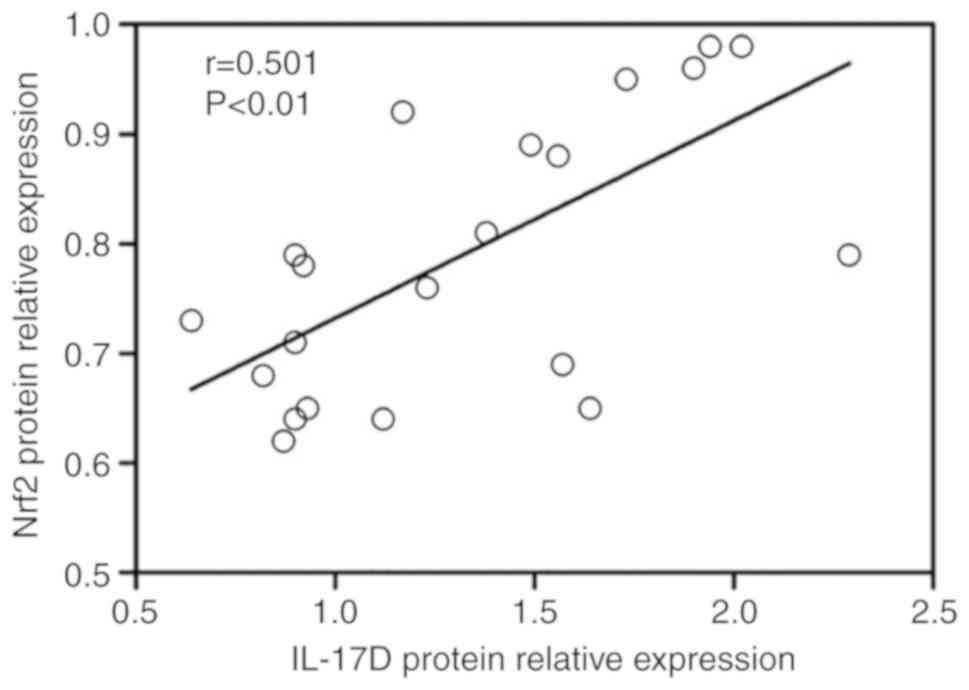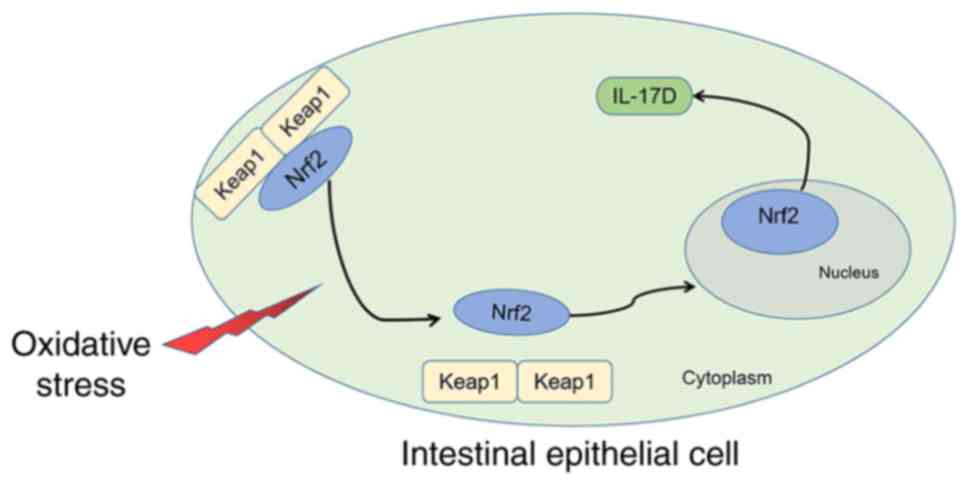|
1
|
Wang J, Zhang A, Li Y, Xu J, Huang F, Zhao
M, Wu B and He S: Effect of intermittent hypoxia or hyperoxia on
lung development in preterm rat neonates during constant oxygen
therapy. J Cell Biochem. 120:17545–17554. 2019. View Article : Google Scholar : PubMed/NCBI
|
|
2
|
Kumar VHS, Wang H, Kishkurno S, Paturi BS,
Nielsen L and Ryan RM: Long-term effects of neonatal hyperoxia in
adult mice. Anat Rec (Hoboken). 301:717–726. 2018. View Article : Google Scholar
|
|
3
|
Kumar VHS, Wang H and Nielsen L: Adaptive
immune responses are altered in adult mice following neonatal
hyperoxia. Physiol Rep. 6:e135772018. View Article : Google Scholar :
|
|
4
|
Chou HC and Chen CM: Neonatal hyperoxia
disrupts the intestinal barrier and impairs intestinal function in
rats. Exp Mol Pathol. 102:415–421. 2017. View Article : Google Scholar : PubMed/NCBI
|
|
5
|
Chen CM and Chou HC: Hyperoxia disrupts
the intestinal barrier in newborn rats. Exp Mol Pathol. 101:44–49.
2016. View Article : Google Scholar : PubMed/NCBI
|
|
6
|
Hong YH, Lillehoj HS, Park DW, Lee SH, Han
JY, Shin JH, Park MS and Kim JK: Cloning and functional
characterization of chicken interleukin-17D. Vet Immunol
Immunopathol. 126:1–8. 2008. View Article : Google Scholar : PubMed/NCBI
|
|
7
|
Diaz JA, Kim WH, Fernandez CP, Jeong J,
Afrin F, Lillehoj HS, Kim S, Kim S, Dalloul RA and Min W:
Identification and expression analysis of duck interleukin-17D in
Riemerella anatipestifer infection. Dev Comp Immunol. 61:190–197.
2016. View Article : Google Scholar : PubMed/NCBI
|
|
8
|
Kumari J, Larsen AN, Bogwald J and Dalmo
RA: Interleukin-17D in Atlantic salmon (Salmo salar): Molecular
characterization, 3D modelling and promoter analysis. Fish
Shellfish Immunol. 27:647–659. 2009. View Article : Google Scholar : PubMed/NCBI
|
|
9
|
Du L, Qin L, Wang X, Zhang A, Wei H and
Zhou H: Characterization of grass carp (Ctenopharyngodon idella)
IL-17D: Molecular cloning, functional implication and signal
transduction. Dev Comp Immunol. 42:220–228. 2014. View Article : Google Scholar
|
|
10
|
Ding Y, Ao J and Chen X: Comparative study
of interleukin-17C (IL-17C) and IL-17D in large yellow croaker
Larimichthys crocea reveals their similar but differential
functional activity. Dev Comp Immunol. 76:34–44. 2017. View Article : Google Scholar : PubMed/NCBI
|
|
11
|
Aggarwal S and Gurney AL: IL-17: Prototype
member of an emerging cytokine family. J Leukoc Biol. 71:1–8.
2002.PubMed/NCBI
|
|
12
|
Starnes T, Broxmeyer HE, Robertson MJ and
Hromas R: Cutting edge: IL-17D, a novel member of the IL-17 family,
stimulates cytokine production and inhibits hemopoiesis. J Immunol.
169:642–646. 2002. View Article : Google Scholar : PubMed/NCBI
|
|
13
|
O'Sullivan T, Saddawi-Konefka R, Gross E,
Tran M, Mayfield SP, Ikeda H and Bui JD: Interleukin-17D mediates
tumor rejection through recruitment of natural killer cells. Cell
Rep. 7:989–998. 2014. View Article : Google Scholar : PubMed/NCBI
|
|
14
|
Saddawi-Konefka R, Seelige R, Gross ET,
Levy E, Searles SC, Washington A Jr, Santosa EK, Liu B, O'Sullivan
TE, Harismendy O and Bui JD: Nrf2 induces IL-17D to mediate tumor
and virus surveillance. Cell Rep. 16:2348–2358. 2016. View Article : Google Scholar : PubMed/NCBI
|
|
15
|
Seelige R, Saddawi-Konefka R, Adams NM,
Picarda G, Sun JC, Benedict CA and Bui JD: Interleukin-17D and Nrf2
mediate initial innate immune cell recruitment and restrict MCMV
infection. Sci Rep. 8:136702018. View Article : Google Scholar : PubMed/NCBI
|
|
16
|
Seelige R, Washington A Jr and Bui JD: The
ancient cytokine IL-17D is regulated by Nrf2 and mediates tumor and
virus surveillance. Cytokine. 91:10–12. 2017. View Article : Google Scholar :
|
|
17
|
Iwakura Y, Ishigame H, Saijo S and Nakae
S: Functional specialization of interleukin-17 family members.
Immunity. 34:149–162. 2011. View Article : Google Scholar : PubMed/NCBI
|
|
18
|
Fort MM, Cheung J, Yen D, Li J, Zurawski
SM, Lo S, Menon S, Clifford T, Hunte B, Lesley R, et al: IL-25
induces IL-4, IL-5, and IL-13 and Th2-associated pathologies in
vivo. Immunity. 15:985–995. 2001. View Article : Google Scholar
|
|
19
|
Wang YH, Angkasekwinai P, Lu N, Voo KS,
Arima K, Hanabuchi S, Hippe A, Corrigan CJ, Dong C, Homey B, et al:
IL-25 augments type 2 immune responses by enhancing the expansion
and functions of TSLP-DC-activated Th2 memory cells. J Exp Med.
204:1837–1847. 2007. View Article : Google Scholar : PubMed/NCBI
|
|
20
|
Song X and Qian Y: The activation and
regulation of IL-17 receptor mediated signaling. Cytokine.
62:175–182. 2013. View Article : Google Scholar : PubMed/NCBI
|
|
21
|
Song X, Zhu S, Shi P, Liu Y, Shi Y, Levin
SD and Qian Y: IL-17RE is the functional receptor for IL-17C and
mediates mucosal immunity to infection with intestinal pathogens.
Nat Immunol. 12:1151–1158. 2011. View
Article : Google Scholar : PubMed/NCBI
|
|
22
|
Ramirez-Carrozzi V, Sambandam A, Luis E,
Lin Z, Jeet S, Lesch J, Hackney J, Kim J, Zhou M, Lai J, et al:
IL-17C regulates the innate immune function of epithelial cells in
an autocrine manner. Nat Immunol. 12:1159–1166. 2011. View Article : Google Scholar : PubMed/NCBI
|
|
23
|
Chang SH, Reynolds JM, Pappu BP, Chen G,
Martinez GJ and Dong C: Interleukin-17C promotes Th17 cell
responses and autoimmune disease via interleukin-17 receptor E.
Immunity. 35:611–621. 2011. View Article : Google Scholar : PubMed/NCBI
|
|
24
|
Yagi Y, Andoh A, Inatomi O, Tsujikawa T
and Fujiyama Y: Inflammatory responses induced by interleukin-17
family members in human colonic subepithelial myofibroblasts. J
Gastroenterol. 42:746–753. 2007. View Article : Google Scholar : PubMed/NCBI
|
|
25
|
Kurasawa K, Hirose K, Sano H, Endo H,
Shinkai H, Nawata Y, Takabayashi K and Iwamoto I: Increased
interleukin-17 production in patients with systemic sclerosis.
Arthritis Rheum. 43:2455–2463. 2000. View Article : Google Scholar : PubMed/NCBI
|
|
26
|
Johansen C, Usher PA, Kjellerup RB,
Lundsgaard D, Iversen L and Kragballe K: Characterization of the
interleukin-17 isoforms and receptors in lesional psoriatic skin.
Br J Dermatol. 160:319–324. 2009. View Article : Google Scholar
|
|
27
|
Stamp LK, Easson A, Lehnigk U, Highton J
and Hessian PA: Different T cell subsets in the nodule and synovial
membrane: Absence of interleukin-17A in rheumatoid nodules.
Arthritis Rheum. 58:1601–1608. 2008. View Article : Google Scholar : PubMed/NCBI
|
|
28
|
Saddawi-Konefka R, O'Sullivan T, Gross ET,
Washington A Jr and Bui JD: Tumor-expressed IL-17D recruits NK
cells to reject tumors. Onco Immunology. 3:e9548532015.
|
|
29
|
Yan X, Tu H, Liu Y, Chen T and Cao J:
Interleukin-17D aggravates sepsis by inhibiting macrophage
phagocytosis. Crit Care Med. 48:e58–e65. 2020. View Article : Google Scholar
|
|
30
|
Nakamura T: Recent progress in organoid
culture to model intestinal epithelial barrier functions. Int
Immunol. 31:13–21. 2019. View Article : Google Scholar
|
|
31
|
Zhao M, Tang S, Xin J, Wei Y and Liu D:
Reactive oxygen species induce injury of the intestinal epithelium
during hyperoxia. Int J Mol Med. 41:322–330. 2018.
|
|
32
|
Adachi T, Kakuta S, Aihara Y, Kamiya T,
Watanabe Y, Osakabe N, Hazato N, Miyawaki A, Yoshikawa S, Usami T,
et al: Visualization of probiotic-mediated Ca2+
signaling in intestinal epithelial cells in vivo. Front Immunol.
7:6012016. View Article : Google Scholar
|
|
33
|
Liu DY and Li JJ: Effect of hyperoxia on
the intestinal IgA secretory component in neonatal rats and on
intestinal epithelial cells in vitro. Braz J Med Biol Res.
43:1034–1041. 2010. View Article : Google Scholar : PubMed/NCBI
|
|
34
|
Lee Y, Clinton J, Yao C and Chang SH:
Interleukin-17D promotes pathogenicity during infection by
suppressing CD8 T cell activity. Front Immunol. 10:11722019.
View Article : Google Scholar : PubMed/NCBI
|
|
35
|
Suzuki T and Yamamoto M: Molecular basis
of the Keap1-Nrf2 system. Free Radic Biol Med. 88(Pt B): 93–100.
2015. View Article : Google Scholar : PubMed/NCBI
|
|
36
|
Suzuki T, Motohashi H and Yamamoto M:
Toward clinical application of the Keap1-Nrf2 pathway. Trends
Pharmacol Sci. 34:340–346. 2013. View Article : Google Scholar : PubMed/NCBI
|
|
37
|
Johnson DA, Amirahmadi S, Ward C, Fabry Z
and Johnson JA: The absence of the pro-antioxidant transcription
factor Nrf2 exacerbates experimental autoimmune encephalomyelitis.
Toxicol Sci. 114:237–246. 2010. View Article : Google Scholar :
|
|
38
|
Furukawa M and Xiong Y: BTB protein Keap1
targets anti-oxidant transcription factor Nrf2 for ubiquitination
by the Cullin 3-Roc1 ligase. Mol Cell Biol. 25:162–171. 2005.
View Article : Google Scholar :
|
|
39
|
Wakabayashi N, Itoh K, Wakabayashi J,
Motohashi H, Noda S, Takahashi S, Imakado S, Kotsuji T, Otsuka F,
Roop DR, et al: Keap1-null mutation leads to postnatal lethality
due to constitutive Nrf2 activation. Nat Genet. 35:238–245. 2003.
View Article : Google Scholar : PubMed/NCBI
|
|
40
|
Taguchi K, Maher JM, Suzuki T, Kawatani Y,
Motohashi H and Yamamoto M: Genetic analysis of cytoprotective
functions supported by graded expression of Keap1. Mol Cell Biol.
30:3016–3026. 2010. View Article : Google Scholar : PubMed/NCBI
|
|
41
|
Cuadrado A, Rojo AI, Wells G, Hayes JD,
Cousin SP, Rumsey WL, Attucks OC, Franklin S, Levonen AL, Kensler
TW and Dinkova-Kostova AT: Therapeutic targeting of the NRF2 and
KEAP1 partnership in chronic diseases. Nat Rev Drug Discov.
18:295–317. 2019. View Article : Google Scholar : PubMed/NCBI
|
|
42
|
Dunigan K, Li Q, Li R, Locy ML, Wall S and
Tipple TE: The thioredoxin reductase inhibitor auranofin induces
heme oxygenase-1 in lung epithelial cells via Nrf2-dependent
mechanisms. Am J Physiol Lung Cell Mol Physiol. 315:L545–L552.
2018. View Article : Google Scholar : PubMed/NCBI
|















